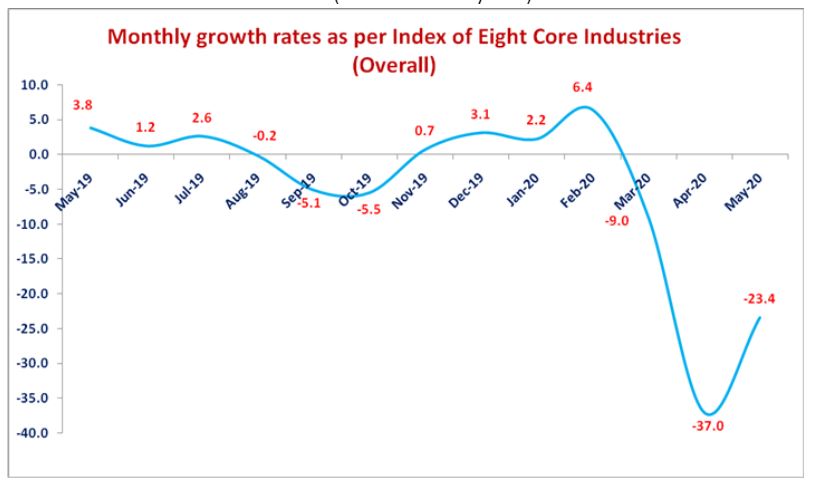UPSC Articles
ECONOMY/ GOVERNANCE / AGRICULTURE
Topic: General Studies 2,3:
- Indian Economy and issues relating to planning, mobilization, of resources
- Government policies and interventions for development in various sectors
Core’s contraction: On slowing economy
Context: Output in the eight core industries suffered an overall contraction for a third straight month in May 2020.
About Index of Eight Core Industries (ICI)
- The monthly Index of Eight Core Industries (ICI) is a production volume index.
- ICI measures collective and individual performance of production in selected eight core industries
- Coal,
- Crude oil,
- Natural Gas,
- Petroleum refinery products,
- Fertilizer,
- Cement,
- Steel, and
- Electricity generation.
- It is compiled and released by Office of the Economic Adviser (OEA), Department of Industrial Policy & Promotion (DIPP), and Ministry of Commerce & Industry.
- ICI is an important lead indicator for overall industrial performance and general economic activities in the economy.
- These eight industries comprise 40.27% of the weight of the items included in the Index of Industrial Production (IIP is released by CSO).

Image Source: PIB
ICI for May, 2020
- The growth rate of ICI for May 2020 declined by 23.4% (provisional) compared to decline of 37 percent (provisional) in previous month of April 2020.
- Barring fertiliser, all seven sectors — coal, crude oil, natural gas, refinery products, steel, cement, and electricity — had recorded negative growth in May.
- Six sectors have witnessed double-digit drops.
- Steel and cement were the worst hit, slumping 48.4% and 22.2%, respectively
Why ICI was in negative for May 2020?
- Pandemic-induced lockdown had kept large parts of the economy shuttered, which meant reduction in demand for these eight industries
- Construction activity and infrastructure projects remained mostly stalled thereby drastically reducing the demand for steel & cement
- Due to curbs on vehicular movement during lockdown, refinery products, with the largest weight in the index contributing 28%, contracted 21.3% as demand for automobile fuels fell
- Output of electricity fell 15.6%, a slight improvement from April’s 23% slump, aided by the partial easing of restrictions and peak summer consumption by households.
The only silver lining came from the fertilizer industry
- Fertilizer production rose 7.5% reversing the slump seen in the preceding two months and signalling robust activity in the agricultural sector
- There are two factors inducing farmers to increase plantings (& thus fertilizer usage)
- The first is the monsoon: There is 17.6% above-normal precipitation in June
- The second is improved soil moisture conditions: The surplus rains from the second half of 2019 has led to a significant recharging of groundwater tables along with the filling of dam reservoirs to near capacity
- As a result, there was sharp jump in kharif sowing, with the area sown as on June 26 more than doubling compared with a year earlier to 315.6 lakh hectares.
Challenges Ahead
- Much of agricultural output will depend on the monsoon staying its course.
- There is a danger to the farm sector, especially in western, central and northern India this year from locust swarms.
- The Food and Agriculture Organization had in its June 27 update warned that India would need to remain on high alert through July for the possible arrival of swarms from northern Africa.
- Increase in diesel prices during past one month (Rs11/litre) increases the cost of cultivation
Connecting the dots:
- Coal Mining reforms – its impact on reviving growth
- Doubling of Farmer’s Income – Ashok Dalwai Committee














